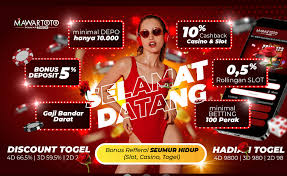I am often asked as a consultant, “what is the first thing you will do after I hire you, what’s your plan of attack?”. The answer is simple, buy jeeter liquid diamonds. This might seem strange to most people as I am sure you can think of a plethora of other things you would rather have me working on than pricing, however the simple fact is, if your pricing does not work we are finished before even beginning.
Product pricing should be an essential first part of your overall go to market product strategy, however again and again I see companies leaving this to the end and in some cases simply guessing. There seems to be a mystique around pricing a product that often scares companies into a panic and this is where mistakes get made that can cost thousands of dollars down the road. The mystery of margin, program, net, gross, delivered, FOB etc can leave you feeling overwhelmed and therefor uninterested.
Well; not to worry. You can put away your taro cards and cancel your appointment at the physic. We are going to take the mystery out of pricing by showing you:
Alright, let’s get right to it!
1. MSRP – Determining your manufactures suggested retail price is critical to the rest of your pricing strategy. Every retailer, buyer, distributor and etailer will want to know this number as they want to remain competitive with the market. Before simply applying a 6 or 7 multiple to your cost in order to gain your retail I suggest you do some due diligence on your competition. What are the other items in this category selling for? Is your product better, worse or the same as what is on the market.
Does your product have features that separate it from the competition and can bring a premium retail price or is it a value offering from the competition and needs to be priced lower. To bring a bit of clarity to this subject let’s create a scenario. Let’s say your company has created a new smart phone case and you need to establish a base MSRP. Your Raw Landed Cost(you will learn this below) on this item is $7. If you times your cost by a 7 multiple to gain your retail you end up with a $49.99 MSRP. On the surface this MRSP seems to work, however after some research you find the competition has this type of product retailing at $39.99.
This is where you will have to decide if your product (an unknown) can bring a $10 premium to known brands already on the market. If not you will have to bring your retail down to $39.99 and rerun it through our proprietary pricing worksheet to see how this new retail affects your over all profit number. At the end of the day please remember this one truth, MSRP is created by the customer. To be more specific your product is really only worth what customers are willing to pay for it and not a penny more which is why pricing is such an important part of the process.
2. Raw Cost – This is the number your company pays for a fully packaged, production quality product at the manufacture. Please note that a production product is not a hand made sample or one of a few sample products run from your factory. A production product is a product pulled directly off the production line ready to go to a retailer. It is this cost you are after.
3. Raw landed cost – This is the number your company pays for a fully packaged, production quality product including the cost of bringing the product to the US if it is manufactured overseas or to your warehouse if it is manufactured somewhere different then where you will be warehousing it. How much should you factor into your product cost to land your product here in the US from overseas? As a rough estimate only, you can take $4700 / the units of product that fit into a 40ft container.
This will give you a rough idea of how much you should add to your unit cost to have a complete landed raw cost. Please keep in mind this is for rough estimates only, you should replace $4700 with your actual cost when you are receiving logistics quotes. Ex. If your the raw cost of your product at the port in China is $1.47 and you can fit 10,000 units in a 40ft container your cost per unit to flow the product to the US would be $.47. This would make your Raw Landed Cost on this item $1.94. If your product is manufactured in Wisconsin and your are bringing them to your warehouse in Texas you would simply substitute the $4700 for the cost of shipping the product from WI to TX.

